Translations:
Other Pages:
CEC Training Modules
Akan Studies Site Map
Sociology for beginners
Contact
Kompan Adepa
Go to the People
Ghana Web
Modern Skills
Introduced in the Twentieth Century
by Phil Bartle, PhD
As Ghana modernises and industrializes, new skills are being developed. Here are illustrations of a few developed through the twentieth century.
 |
Electricity from Akosombo
The dam at Akosombo, during the sixties, the flooding of Lake Volta, produced electricity. Much was used for smelting bauxite, and then a grid was built to serve the country. The electricity allowed the development of much electrically driven modern machinery.
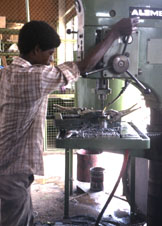 |
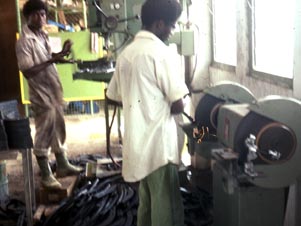 |
Operating a Drill Press and Grinder at a Trade School
While the Swiss Missionaries introduced some practical skills, mainly carpentry, masonry and black smithing to boys in the nineteenth century, independence in 1957 saw the expansion of trade skill institutions.
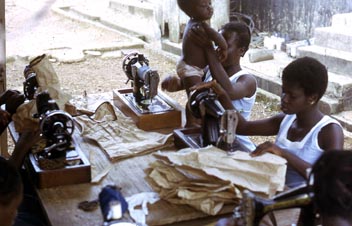 |
A Private School for Seamstresses
When Mrs Ramseyer, the Swiss Missionary, introduced sewing classes for girls in 1888, two things caught on, sewing by women and sewing classes for women. With a long history of marketing, women found out how to make an independent income by sewing or teaching how to sew. The trainees, as in this photo, often learn on brown paper, instead of cloth, because it is cheaper.
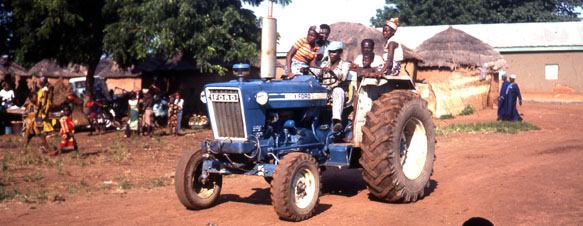 |
Men Got Training in Driving Tractors – Women Got Rides
Although farming has historically been the work of women, the introduction of mechanization changed things; driving tractors was taught first and mainly to men. Tractors plowed too deeply in the shallow rain forest soils, helping (along with commercial fertilizers) to destroy the soils.
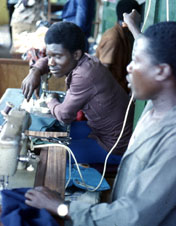 |
Tailors – Electric Sewing Machines
Historically, men were assigned to weaving kente, so working with cloth as tailors was seen as an easy transition.
 |
Modern Electronic Communications
 |
Nowadays, of Course, it's Computers; In the Seventies It Was Electric Typewriters
Private Repair Businesses
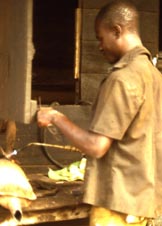 |
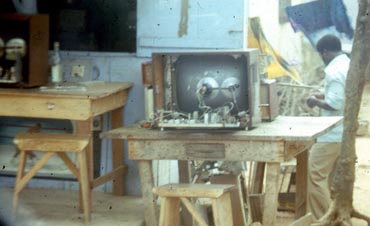 |
Gas Welding and Television Repair